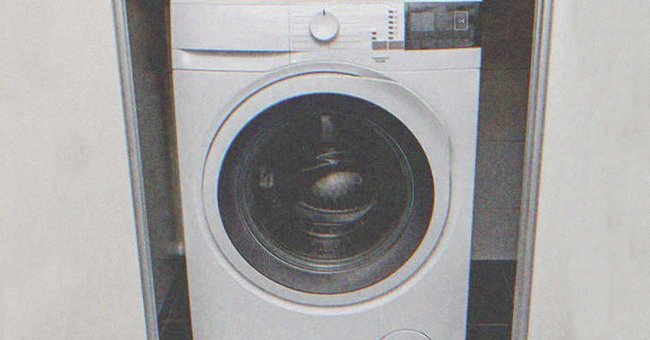
The Gas vs. Electric Stove Debate
The debate over gas stoves vs. electric stoves is ongoing. Many people prefer what they grew up with, and that’s understandable. Familiarity often shapes our choices. However, beyond nostalgia, which is better for cooking: gas or electric?
Factors to Consider
There’s no one-size-fits-all answer. Both types of stoves cook food differently. Your choice may depend on what you cook most often. Additionally, consider safety and utility costs. Let’s delve into these factors with a detailed analysis below.
Gas Stoves: Cost-Effective in the Long Run
Buying a new stove is a big investment. Comparing gas and electric stoves upfront can be tricky due to price ranges. Low-end electric stoves start around $650, while gas stoves start at $800. High-end electric stoves can cost up to $2,800, whereas top gas stoves are about $2,300.
In the long run, gas stoves are cheaper due to lower utility costs. Utility rates vary, but generally, gas is less expensive than electricity. Investing in a gas stove can save you 10-30% annually on utilities.
Electric Stoves: Safer Option
Electric stoves are safer. Gas stoves have open flames, which can be hazardous, especially for children and pets. Items like tea towels and wooden spoons near the flame can catch fire. Although electric stoves can burn you, it’s less likely. Gas stoves’ flames indicate when they’re hot, but electric burners can stay hot without visible signs. Still, electric stoves are less likely to cause burns. Plus, they don’t emit gas, eliminating the risk of leaks.
Gas Stoves: Faster Cooking
Gas stoves heat up quickly, which is why many restaurants use them. They reduce cooking time significantly. Electric stoves take longer to heat up, while gas burners ignite instantly and start heating the pot immediately.
Electric Ovens: Even Cooking
Electric ovens cook more evenly than gas ovens. Gas emits moisture, creating a wetter heat, while electric ovens provide dry heat, perfect for roasts and baked goods. Gas stoves may cook unevenly, so food should be placed away from the heat source and rotated regularly.
Gas Stoves: Versatility
Gas stoves offer more cooking options, such as flambéing, charring, and toasting, which electric stoves can’t do as effectively. This versatility makes them a favorite among restaurants and dedicated home cooks.
Electric Stoves: Easier to Clean
Flat-top electric stoves are easier to clean. A damp sponge can usually handle most messes. Even electric stoves with coil burners are manageable—remove the burner, clean the plate, and reattach. Cleaning takes just a few minutes.
In contrast, gas stoves have heavy, multi-part grates that need to be removed. Cleaning them can be time-consuming, and losing an important piece is a risk.
Conclusion
Ultimately, the choice between gas and electric stoves depends on your cooking habits, safety needs, and willingness to manage utility costs and cleaning. Both have their advantages, so consider what matters most to you in your kitchen.
Poor Young Mom Buys Old Washing Machine She Could Barely Afford, Then Finds Note Inside — Story of the Day

Jessica wanted to buy a $250 washing machine, but she couldn’t afford it, so she had to ask the seller for a discount. He consented right away, to her surprise, but when she got home and opened the machine, she discovered something even more surprising inside.
When Jessica and her husband Edward welcomed their first child, Kathy, they quickly understood that parenting would not be easy. The young parents were having financial difficulties then, and there was constantly a lack of funds.
Edward owned a textile business in Texas, but it was struggling. Meanwhile, Jessica worked as a nanny on weekends while Edward looked after Kathy. With a baby at home now, expenses went up, while income stayed the same or even went down some months.

Jessica bought the washing machine at a discounted price | Photo: Shutterstock
Ahh, it must be challenging for them too. Perhaps more difficult. Jessica reflected as she drove away from work one weekend, glancing at her neighbor Sandra and her children.
Sandra was already raising a third child even though her husband was just a truck driver. Although he got paid on a piecemeal basis, he wasn’t rowing millions of dollars there. Sandra had been working on a farm for several years to help support her husband financially, and it was the only way they could make ends meet.
Jessica and Edward, like their neighbors, were scraping by on whatever they could. Edward had stopped going to bars with friends to conserve money after Kathy’s arrival, and Jessica had given up on the little things she had managed to buy after saving money from the monthly budget.
Luckily, one month, things were going well financially. Edward’s business grew slowly but steadily, and Jessica managed to save some money. But just when it appeared like they would be having a less stressful month, another problem knocked at her door: the washing machine broke down.

After Kathy’s birth, Andrew and Jessica were having a hard time | Photo: Pexels
After considering her options, Jessica realized that there was no point in getting the machine repaired. The labor and motor replacement cost would be slightly less than the cost of a new machine, and there was no guarantee that the repaired equipment would last as long. After all, this was the fourth time the machine demanded a repair in the same year.
Knowing there was no other option but to look for a new machine, Jessica sat down on the computer, looking for an affordable one. An hour of searching led her to one suitable find, but it cost $250, and Jessica could only afford to pay $150.
In the end, she decided to see the merchant in person and request a discount right then and there. James Carter, 1216 East Madison Street, Brownsville, TX, said the advertisement. Jessica made a note of the owner’s address.
Upon arrival, a man about Jessica’s age opened the door. There was a calmness in his eyes, but the dark circles beneath them revealed inner stress and exhaustion. “How may I assist you?” he asked, his voice deep but mournful.
“Hi, are you James Carter? I’m Jessica Turner. I messaged you regarding the washing machine. Can I have a look at it?”
“Oh, Jessica. Yes, sure. Come in,” James said, and Jessica followed him in.

Jessica visited the seller’s house | Photo: Unsplash
The entire house was in shambles, and Jessica deduced from the disorganized layout that the man was planning to relocate, which was why he’d put the machine up for sale. As she entered the room next to the hall, she saw the white washing machine. It appeared to look brand new, precisely as she’d seen it online.
“Well, I hope you remember I said I wanted to talk about the price,” Jessica said, having viewed the machine from the exterior. “I can’t afford to pay $250! I agree the machine still looks brand new and everything, but I can’t extend my budget beyond $150. We just had a baby, and you know things are not so well financially, so I was wondering if you could please give me a discount?”
James stood there silent for a while, pondering, and then nodded his head in agreement. “Sure. I don’t mind. $150 sounds like a good deal to me,” he said absentmindedly and then turned around to lift the machine.
Jessica’s eyes widened in surprise. “Really? Thank you! Thank you so much!”
James gave Jessica a slight smile and the woman could sense that his thoughts had wandered beyond the room in that short while, but she didn’t bother much about it as she was rejoicing in luck.

James agreed to sell the washing machine at $150 | Photo: Pexels
After 5 minutes, the two of them carried the huge machine to Jessica’s car without gloves, belts, or loading belts, huffing and sweating. She’d already paid James and was looking forward to getting the machine home.
As she prepared to leave, she gave her hand to say goodbye and asked him to meet her somewhere in the future, but James’ answer was a flat no. “I’m leaving this place for good, and I won’t be returning, so I don’t think we’ll be meeting again. Anyway, I hope the machine is useful to you,” he said with a quick but honest smile. Jessica simply smiled at the odd response and thanked him once more before leaving.
When she got home, the first thing she did was double-check the equipment’s functionality. However, as she opened the dryer to check the lint filter, she was shocked to find $150 in there.
It also contained a folded piece of paper in one corner with a message. “It’s a gift for your newborn baby,” it read. “I didn’t think it was fair to ask for money from someone who was already struggling financially.
“As a result, I chose to return it. Someone very close to my heart once told me that if I have the resources, I should help those who are less fortunate.” Jessica was shocked. When did he place this inside the machine?

Jessica found a note inside the washing machine | Photo: Pexels
Suddenly, it hit her. She’d asked him to help her move the machine to the yard while she fetched ropes from the car trunk to pack the machine properly, and it’s possible that’s when he put it there.
Jessica wanted to express her gratitude to him for his assistance. However, because he didn’t provide a phone number on the website and returning to the house would be a two-hour journey from her home, she decided to see him the next day.
Unfortunately, it was too late by then, as the man had already left the house, and a for sale sign was posted in the yard. Jessica left the house dejected, thanking him once more in her heart.
One year later…
Jessica and Edward were finally moving into a larger home. Kathy had been accepted to a good school, and Edward’s business was doing well.
Jessica was standing on the balcony of her former house, surveying the area where she’d spent most of her days. The place held a lot of memories for her. She switched her sights to Sandra’s residence and overheard Sandra and her husband bickering over purchasing a new washing machine.

One year later, Jessica gave the machine to Sandra | Photo: Shutterstock
Jessica took a look at the wet linen-laden rope on Sandra’s terrace. Oh, that poor woman must have done all the laundry herself. I should do something to help her.
So before leaving, she rang the doorbell at Sandra’s and left the washing machine on her doorstep with a note that read, “With love from your neighbor, Jessica.”
Jessica saw how happy Sandra was when she opened the door and spotted the machine on her porch.
So this was how James felt when he helped me. Ahh, honestly, it does feel amazing. However, I’m still curious about who encouraged him and asked him to assist people in need. Jessica pondered as their car sped away to their new destination.
What can we learn from this story?
- Never hesitate to assist someone in need if you have the means to do so. The way Jessica helped Sandra and James helped Jessica are beautiful examples of this.
- Learn to emulate the goodness of your surroundings. Jessica was inspired by James’ example and stepped in to assist Sandra.
If you enjoyed this story, you might like this one about a widower who discovered his wife’s hiding place after her death and learned a shocking truth.
This account is inspired by our reader’s story and written by a professional writer. Any resemblance to actual names or locations is purely coincidental. All images are for illustration purposes only. Share your story with us; maybe it will change someone’s life.



Leave a Reply